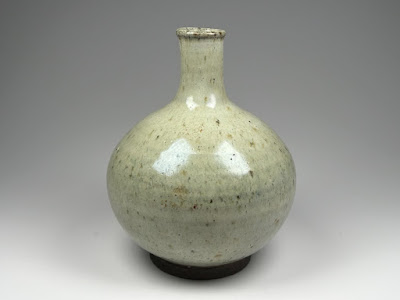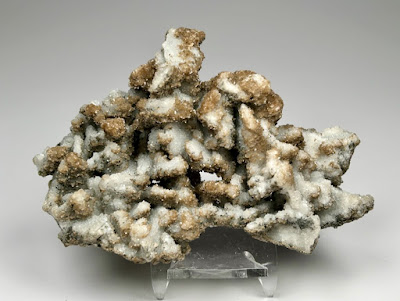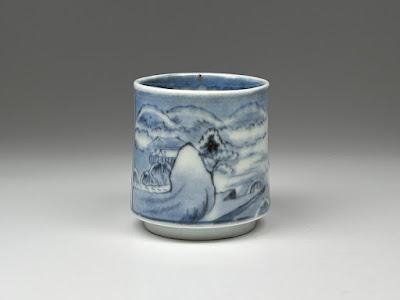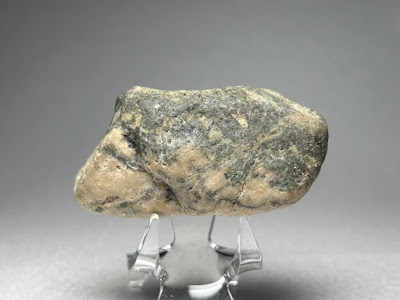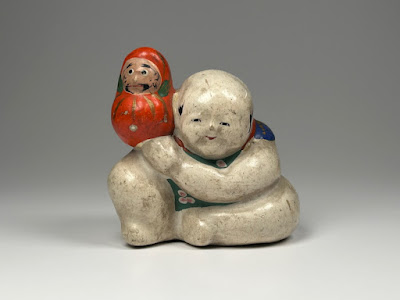獅子と梅鶯図 のぞき猪口 Lion, Nightingale and Plum Tree

Top width: 53 mm / Height: 58 mm / Bottom width: 40 mm いかにも「江戸」を感じさせるデザインののぞき猪口。縦縞文様を背景に梅とウグイスの窓絵が2つ、そして四方襷を背景に獅子図の窓絵が2つ、それぞれ上下に描きわけている。古伊万里愛好家のあいだでは、裾まわりの剣先文様は上手の猪口のあかし、とされているが、たしかにできのいい、江戸中期の佳作といえるだろう。 This nozoki -type cup shows the typical design of the Edo period. Two picture frames of a plum tree and a bird (nightingale) with a vertical-line pattern and another two picture frames of a lion with a diamond-lattice pattern are respectively drawn on the upper and lower parts. The sawtooth pattern at the bottom part is said to be a proof of a high-quality old Imari cup, which does apply to this case. とりあわせ的にはやはり梅にウグイスだろう。正月につかいたい器だ。 An uguisu (nightingale) must fly around ume (plum) blossoms in Japan. It is suitable in New Year's Days. 獅子の描き方や顔料のつかい方は 以前紹介した猪口 とほぼおなじ。製作年代もおなじくらいだろう。 The lion is drawn in a similar way with similar pigments as the one shown before . 高台はかなり薄い。 The bottom rim is thin.
